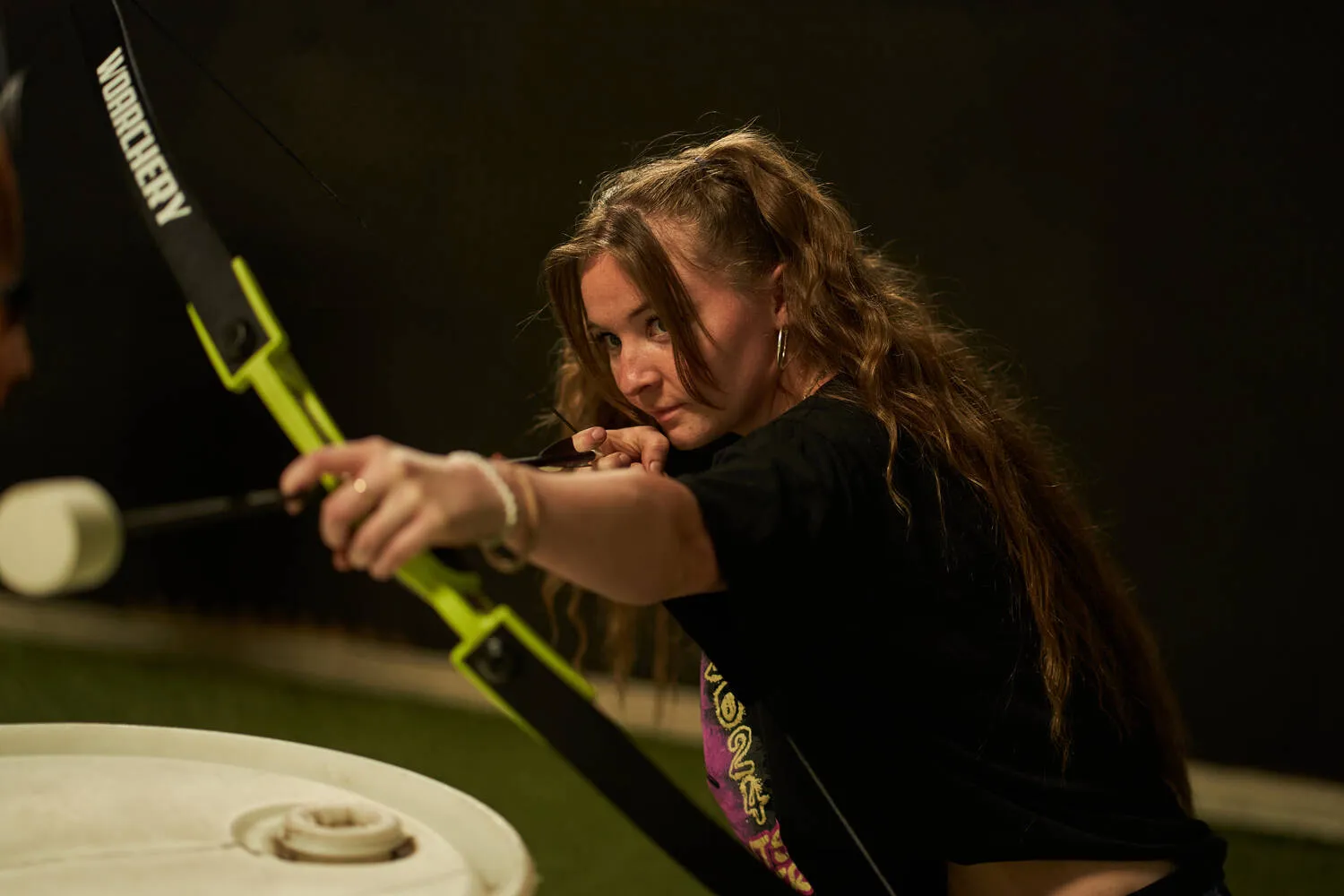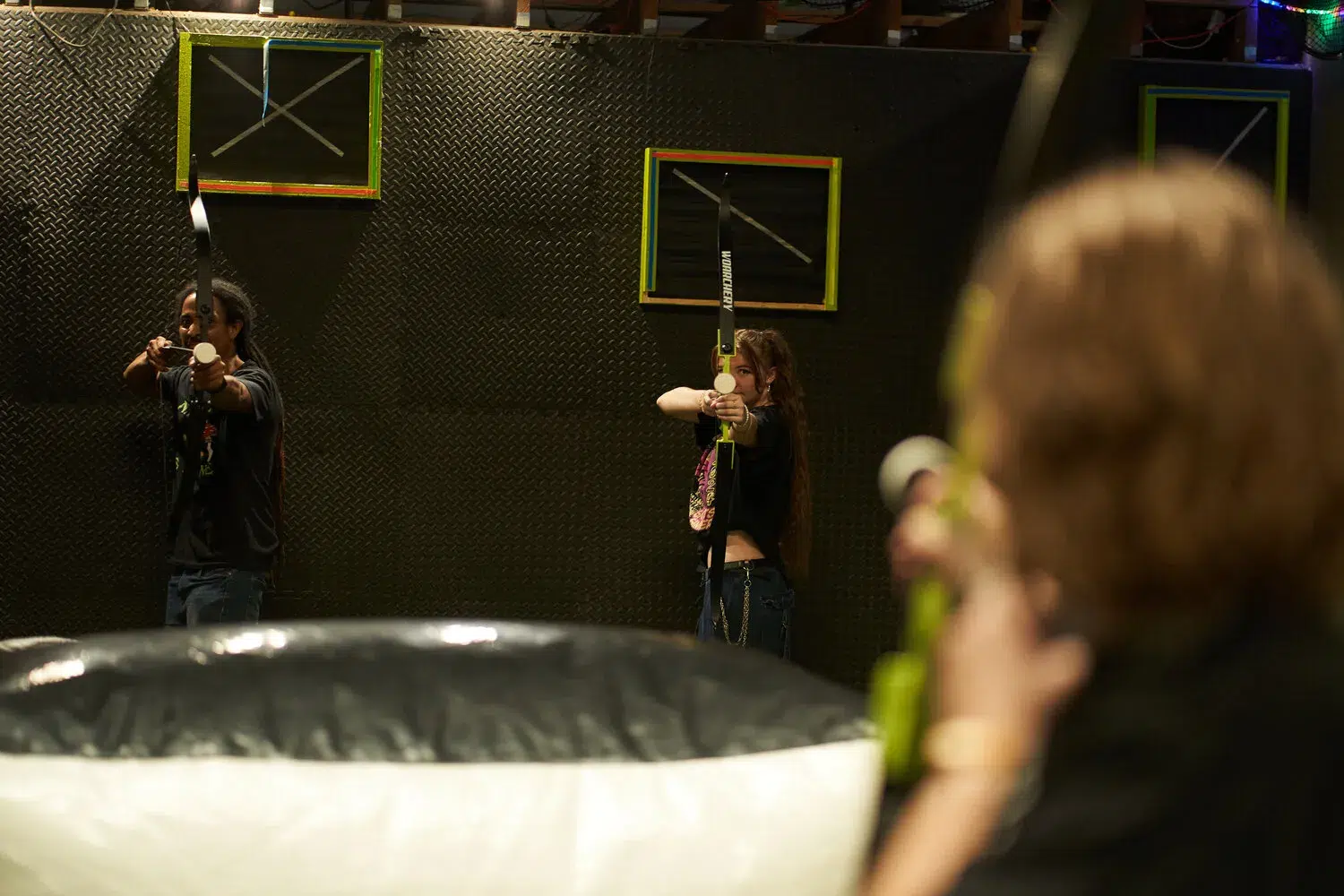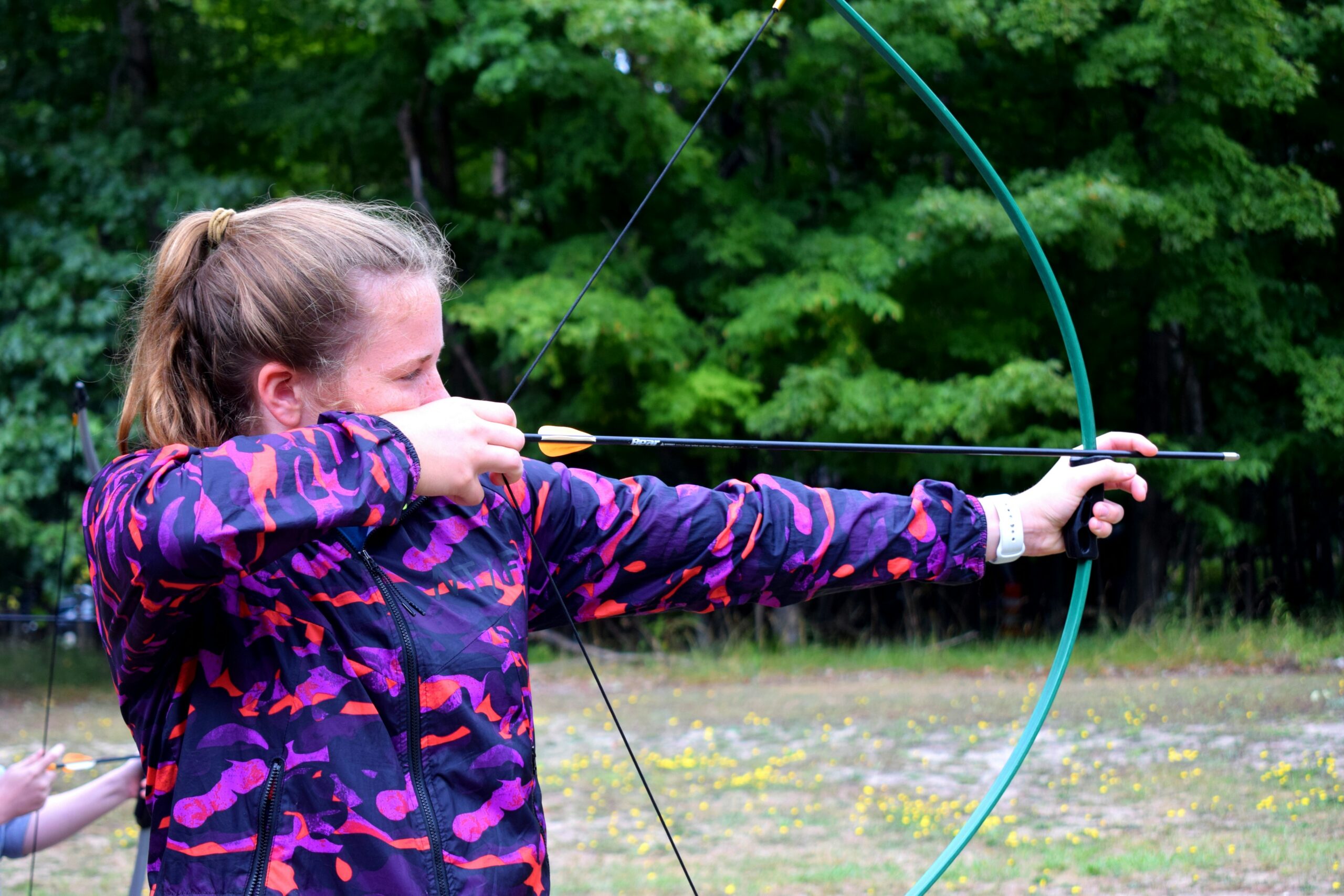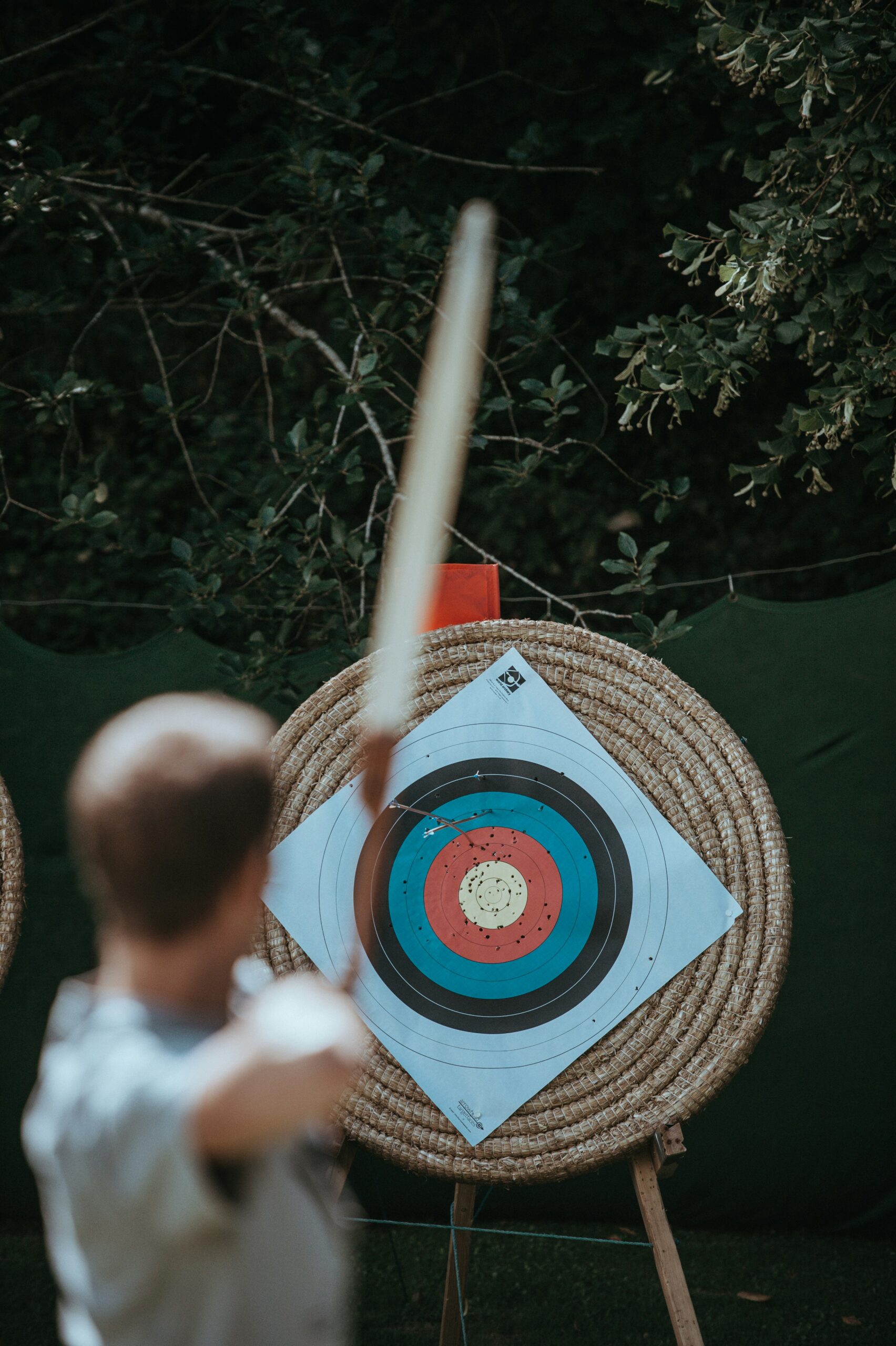Arrow tag is a fun, energetic game that blends the thrill of archery with the excitement of combat. Whether played indoors or outdoors, the experience can vary drastically. This guide will explore the differences between indoor and outdoor arrow tag experiences, analyzing physical settings and game dynamics, evaluating safety and environmental considerations, and understanding social interactions and group experiences. Additionally, we will provide practical tips for optimizing play and present user perspectives to offer insights into each experience.
Key Takeaways
- Indoor and outdoor arrow tag experiences offer unique settings and gameplay dynamics.
- Safety varies between environments; indoor setups generally provide more controlled conditions.
- Player interactions can enhance the overall experience of the game in any setting.
- Optimizing gameplay techniques improves performance and enjoyment, regardless of the venue.
1. How do indoor and outdoor arrow tag settings compare?

Indoor arrow tag is typically played in enclosed arenas with controlled conditions, while outdoor arrow tag occurs in expansive settings like parks or fields. Indoor arenas often provide structured obstacles, while outdoor settings allow for natural terrain variations. This contrast influences gameplay, movement strategies, and participant interactions.
Comparing Indoor and Outdoor Arena Layouts
Regarding physical layout, indoor arenas may feature walls, barriers, and designated targets, creating opportunities for tactical play. Conversely, outdoor settings allow for larger game fields with more dynamic gameplay. The different arenas can affect strategy, as players can hide behind equipment indoors, while trees and bushes serve as natural cover in outdoor environments.
Features of Indoor Arrow Tag Arenas
Indoor arenas are designed to create a controlled, immersive environment where lighting, temperature, and layout can be customized to maximize excitement and safety. Barriers are strategically placed to encourage tactical maneuvers, and the close proximity of players often results in faster, more intense matches. Indoor venues also allow for consistent game conditions, making it easier for players to develop skills related to accuracy, quick reflexes, and close-quarters strategy.
How Venue Size Influences Gameplay
The size of the playing field dramatically impacts the style of play. Smaller indoor arenas promote intense, high-frequency engagements, requiring players to think and react quickly in tight spaces. In contrast, larger outdoor fields give players more room to hide, flank, and devise complex strategies, emphasizing endurance, communication, and map control. Players must adjust their tactics depending on the spatial dynamics of each environment to succeed.
2. What are the game dynamics in indoor and outdoor arrow tag?

Game dynamics in indoor and outdoor arrow tag can differ significantly due to the environment. Indoor games may emphasize quick-paced action, often leading to faster gameplay, whereas outdoor games may incorporate longer distances and require higher levels of physical stamina.
How Indoor and Outdoor Settings Shape Arrow Tag Strategies
In indoor arrow tag, players may use short-range strategies that involve rapid maneuvers, while outdoor games often require players to plan their movements more carefully and use teamwork to navigate the open terrain efficiently. The choice of arrow tag setting can intentionally focus on skill development relevant to either style, whether enhanced speed and accuracy or tactical positioning and teamwork.
Speed and Intensity of Indoor Games
Indoor arrow tag games tend to prioritize speed and agility. With obstacles close together and limited space to maneuver, players must react swiftly to avoid being hit while capitalizing on quick offensive opportunities. Rapid decision-making, precision, and fast transitions between offense and defense define indoor dynamics, making matches feel energetic and often highly competitive.
Tactical Depth of Outdoor Games
Outdoor arrow tag games favor tactical depth and long-term planning. Players can spread out across the field, use the natural environment for stealth, and engage in broader team-based strategies. Matches tend to be slower-paced but involve more complex maneuvers, such as flanking attacks or ambushes, which require careful coordination and communication among teammates.
3. How do safety and environmental considerations vary by setting?

Safety is paramount in Arrow Tag, and the environment ensures player security. Indoor arenas often have safety protocols to minimize risks, including padded walls, controlled lighting, and designated areas for players to rest. These environments are designed to reduce injuries.
Safety Considerations for Outdoor Arrow Tag Games
Outdoor arrow tags present different safety challenges due to variable weather conditions and natural terrain. Players may encounter uneven ground, which could lead to falls or sprains. Additionally, outdoor experiences can expose players to elements such as wind and sun, making it essential to dress appropriately and stay hydrated.
Controlled Safety Measures Indoors
Indoor arrow tag arenas offer controlled safety features such as padded walls, cushioned floors, and consistent lighting, which help minimize injuries. Since organizers can regulate the environment, players experience fewer surprises, making enforcing safety protocols and monitoring players’ well-being throughout the event easier.
Environmental Risks in Outdoor Settings
While exciting, outdoor archery tag fields present unique safety challenges. Uneven terrain, loose debris, unpredictable weather, and variable visibility increase the risk of slips, trips, and other accidents. Organizers must carefully inspect fields before play begins and remain vigilant about changing conditions that could impact player safety during matches.
4. What are the social interactions like during indoor and outdoor arrow tag?

Social interactions in indoor and outdoor arrow tag settings can create memorable group experiences. Indoor settings facilitate quicker interactions because players are closer together and can easily communicate during gameplay. The controlled environment might also encourage bonding through shared tactics and teamwork.
Building Teamwork and Social Connections in Outdoor Arrow Tag
Outdoor settings often promote more collaborative interactions. Players must communicate strategically to navigate the larger space, making it essential to develop strong team dynamics. The broader area can also lead to unique experiences like group retreats or parties, where players can socialize before or after games.
Facilitating Social Bonds Indoors
Indoor settings encourage frequent social interaction because of the confined space and constant proximity of players. Quick exchanges of strategy, celebration after a successful play, and light-hearted banter during short breaks foster a lively and collaborative atmosphere that strengthens social bonds among participants.
Outdoor Environments and Group Dynamics
Outdoor arrow tag experiences often require deeper teamwork and communication, as players must coordinate movements across larger areas and adapt to changing environmental conditions. The need for planning and execution of broader strategies naturally promotes leadership, problem-solving, and camaraderie among team members, enhancing the overall social experience.
5. How can players optimize their arrow tag play in different environments?

Optimizing play in indoor arrow tag involves familiarizing oneself with the arena layout and practicing maneuvering skills within confined spaces. Players should focus on quick reflexes, aim accuracy, and strategic use of obstacles. Training in these areas can improve performance and faster reactions during high-paced play.
Optimizing Outdoor Arrow Tag Through Teamwork and Environmental Awareness
Outdoor arrow tag optimizations revolve around teamwork and environmental awareness. Learning to work with the landscape—using trees for cover, for instance—can significantly affect gameplay outcomes. Players should practice communication skills and develop team strategies that leverage outdoor features.
Strategies for Mastering Indoor Arenas
To excel in indoor arrow tag, players should focus on mastering quick reflexes, efficient use of cover, and accurate shooting in confined spaces. Studying arena layouts in advance and practicing quick pivots, peeking techniques, and rapid-fire shots can give players a competitive edge during fast-paced matches where every move counts.
Techniques for Outdoor Gameplay Success
Success outdoors hinges on teamwork, stamina, and environmental awareness. Players should practice scanning their surroundings, using natural cover wisely, and communicating silently over long distances. Developing fitness levels to maintain high performance across extended matches is vital in staying competitive in expansive outdoor settings.
6. What are the user perspectives on indoor versus outdoor arrow tag experiences?

User perspectives can greatly influence choices between indoor and outdoor arrow tags. Many players report enjoying the thrill of outdoor matches for their vastness and variability. Outdoor experiences often evoke excitement and allow for exploration, particularly for younger participants.
Why Some Players Prefer the Structure of Indoor Arrow Tag
Conversely, players who prefer detailed structure and predictability may lean towards indoor arrow tag. They appreciate the controlled conditions and minimal environmental distractions that indoor arenas provide. Gathering feedback from participants can highlight group preferences and guide organizations in offering the best arrow tag options.
Enthusiasm for Outdoor Adventure
Many players strongly prefer the freedom and unpredictability of outdoor arrow tag. They appreciate the expansive fields, the opportunity to interact with nature, and the strategic depth that larger, less structured environments offer. Outdoor settings are often described as thrilling, adventurous, and uniquely memorable compared to more predictable indoor matches.
Finding the Right Fit for Each Group
Ultimately, the ideal arrow tag setting depends on the goals and preferences of the group involved. Competitive players might gravitate toward indoor arenas for their intensity, while groups seeking adventure or casual fun might prefer the broader possibilities of outdoor matches. Surveying participant interests beforehand can ensure the most rewarding and enjoyable experience.
Conclusion
Choosing between indoor and outdoor arrow tag presents distinct opportunities. Each setting offers its unique benefits, gameplay styles, and player interactions. Players should consider their preferences, objectives, and group dynamics when selecting a venue. By assessing these elements, participants can fully optimize their arrow tag experiences.

